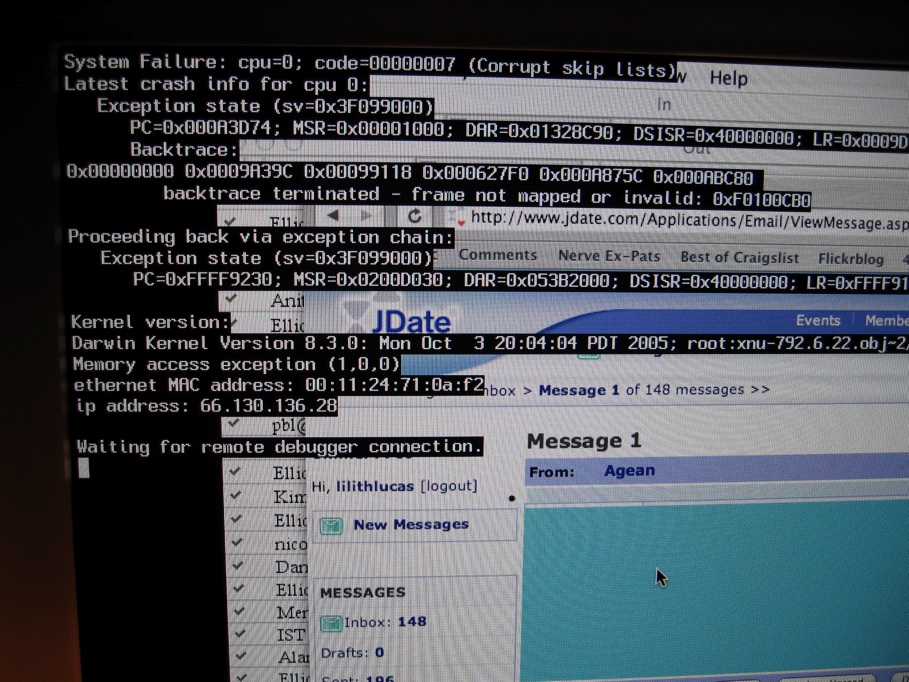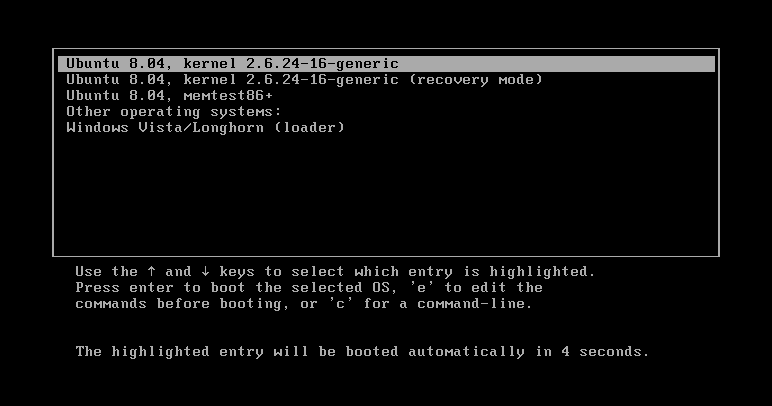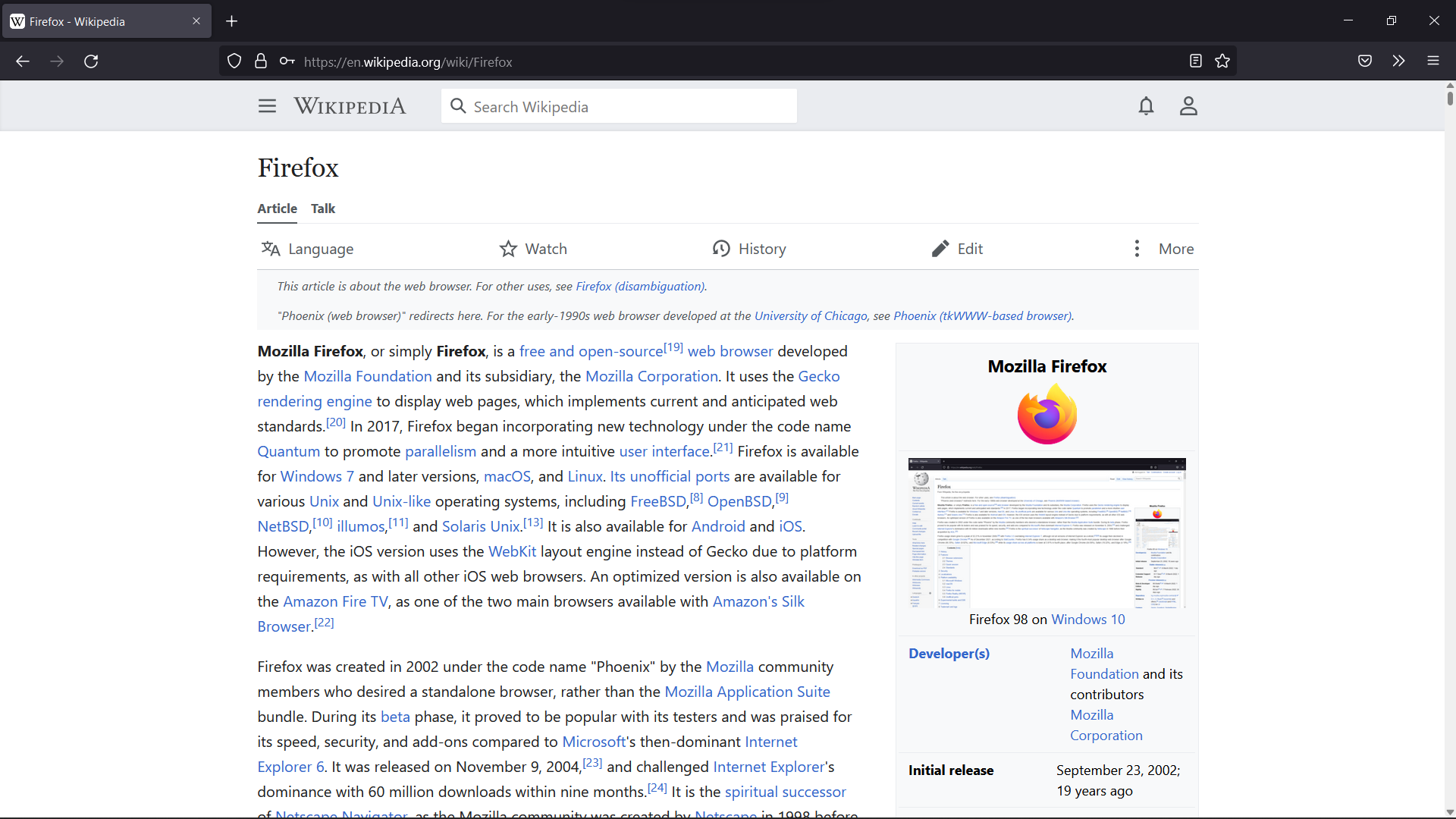|
SystemRescueCd
SystemRescue (Previously known as "SystemRescueCD") is a Linux distribution for x86 64 and x86 computers. The primary purpose of SystemRescue is to repair unbootable or otherwise damaged computer systems after a system crash. SystemRescue is not intended to be used as a permanent operating system. It runs from a Live CD, a USB flash drive or any type of hard drive. It was designed by a team led by François Dupoux, and is based on Arch Linux since version 6.0. Starting with version 6.0, it has systemd as its init system. Features SystemRescue is capable of graphics using the Linux framebuffer option for tools such as GParted. It has options such as connecting to the Internet through an ADSL modem or Ethernet and graphical web browsers such as Mozilla Firefox. SystemRescue features include: * GNU Parted and GParted to partition disks and resize partitions, including FAT32 and NTFS * fdisk to edit the disk partition table * PartImage - disk imaging software which copies only ... [...More Info...] [...Related Items...] OR: [Wikipedia] [Google] [Baidu] |
PartImage
Partimage is a disk cloning utility for Linux/UNIX environments. Partimage can save partitions in many formats to a disk image. Utilities such as Partimage are useful in a number of situations which are commonly encountered by network administrators as well as advanced computer users who maintain their own systems. The last stable release was in 2010; since then, one of Partimage's authors has worked on FSArchiver, which has broader functionality than Partimage. Common uses Some common uses for Partimage are as follows. * Backup of individual disk partitions. volume backups are very useful for recovery in the case of a disk failure or data corruption. * Large-scale operating system deployment. Organizations with multiple, similar computer systems may use Partimage or similar utilities to ease the process of operating system and software provisioning. Features For Windows users, Partimage includes experimental support for NTFS. Partimage supports most common Linux file systems ... [...More Info...] [...Related Items...] OR: [Wikipedia] [Google] [Baidu] |
GNU Parted
GNU Parted (the name being the conjunction of the two words PARTition and EDitor) is a free partition editor, used for creating and deleting partitions. This is useful for creating space for new operating systems, reorganising hard disk usage, copying data between hard disks, and disk imaging. It was written by Andrew Clausen and Lennert Buytenhek. It consists of a library, libparted, and a command-line front-end, parted, that also serves as a reference implementation. , GNU Parted runs only under Linux and GNU/ Hurd. Other front-ends nparted is the newt-based frontend to GNU Parted. Projects have started for an ncurses frontend, that also could be used in Windows (with GNUWin32 Ncurses). fatresize offers a command-line interface for FAT16/FAT32 non-destructive resize and uses the GNU Parted library. Graphical front-ends GParted and KDE Partition Manager are graphical programs using the parted libraries. They are adapted for GNOME and KDE respectively; two major des ... [...More Info...] [...Related Items...] OR: [Wikipedia] [Google] [Baidu] |
Crash (computing)
In computing, a crash, or system crash, occurs when a computer program such as a software application or an operating system stops functioning properly and exits. On some operating systems or individual applications, a crash reporting service will report the crash and any details relating to it (or give the user the option to do so), usually to the developer(s) of the application. If the program is a critical part of the operating system, the entire system may crash or hang, often resulting in a kernel panic or fatal system error. Most crashes are the result of a software bug. Typical causes include accessing invalid memory addresses, incorrect address values in the program counter, buffer overflow, overwriting a portion of the affected program code due to an earlier bug, executing invalid machine instructions (an illegal opcode), or triggering an unhandled exception. The original software bug that started this chain of events is typically considered to be the cause ... [...More Info...] [...Related Items...] OR: [Wikipedia] [Google] [Baidu] |
Init System
In Unix-based computer operating systems, init (short for ''initialization'') is the first process started during booting of the computer system. Init is a daemon process that continues running until the system is shut down. It is the direct or indirect ancestor of all other processes and automatically adopts all orphaned processes. Init is started by the kernel during the booting process; a kernel panic will occur if the kernel is unable to start it. Init is typically assigned process identifier 1. In Unix systems such as System III and System V, the design of init has diverged from the functionality provided by the init in Research Unix and its BSD derivatives. Up until recently, most Linux distributions employed a traditional init that was somewhat compatible with System V, while some distributions such as Slackware use BSD-style startup scripts, and others such as Gentoo have their own customized versions. Since then, several additional init implementations have ... [...More Info...] [...Related Items...] OR: [Wikipedia] [Google] [Baidu] |
Partition Table
Disk partitioning or disk slicing is the creation of one or more regions on secondary storage, so that each region can be managed separately. These regions are called partitions. It is typically the first step of preparing a newly installed disk, before any file system is created. The disk stores the information about the partitions' locations and sizes in an area known as the partition table that the operating system reads before any other part of the disk. Each partition then appears to the operating system as a distinct "logical" disk that uses part of the actual disk. System administrators use a program called a partition editor to create, resize, delete, and manipulate the partitions. Partitioning allows the use of different filesystems to be installed for different kinds of files. Separating user data from system data can prevent the system partition from becoming full and rendering the system unusable. Partitioning can also make backing up easier. A disadvantage is that it ... [...More Info...] [...Related Items...] OR: [Wikipedia] [Google] [Baidu] |
Fdisk
In computing, the fdisk command-line utility provides disk-partitioning functions, preparatory to defining file systems. fdisk features in the DOS, DR FlexOS, IBM OS/2, and Microsoft Windows operating systems, and in certain ports of FreeBSD, NetBSD, OpenBSD, DragonFly BSD and macOS for compatibility reasons. In versions of the Windows NT operating-system line from Windows 2000 onwards, is replaced by a more advanced tool called diskpart. Similar utilities exist for Unix-like systems, for example, BSD disklabel. Implementations IBM PC DOS IBM introduced , Fixed Disk Setup Program version 1.00, with the March 1983 release of the IBM PC/XT, the first PC to store data on a hard disk, and the IBM Personal Computer DOS version 2.0. Version 1 could be used to create one FAT12 DOS partition, delete it, change the active partition, or display partition data. writes the master boot record, which supported up to four partitions. The other three were intended for other o ... [...More Info...] [...Related Items...] OR: [Wikipedia] [Google] [Baidu] |
NTFS
New Technology File System (NTFS) is a proprietary journaling file system developed by Microsoft. Starting with Windows NT 3.1, it is the default file system of the Windows NT family. It superseded File Allocation Table (FAT) as the preferred filesystem on Windows and is supported in Linux and BSD as well. NTFS reading and writing support is provided using a free and open-source kernel implementation known as NTFS3 in Linux and the NTFS-3G driver in BSD. By using the convert command, Windows can convert FAT32/16/12 into NTFS without the need to rewrite all files. NTFS uses several files typically hidden from the user to store metadata about other files stored on the drive which can help improve speed and performance when reading data. Unlike FAT and High Performance File System (HPFS), NTFS supports access control lists (ACLs), filesystem encryption, transparent compression, sparse files and file system journaling. NTFS also supports shadow copy to allow backups of a sy ... [...More Info...] [...Related Items...] OR: [Wikipedia] [Google] [Baidu] |
File Allocation Table
File Allocation Table (FAT) is a file system developed for personal computers. Originally developed in 1977 for use on floppy disks, it was adapted for use on hard disks and other devices. It is often supported for compatibility reasons by current operating systems for personal computers and many mobile devices and embedded systems, allowing interchange of data between disparate systems. The increase in disk drives capacity required three major variants: FAT12, FAT16 and FAT32. The FAT standard has also been expanded in other ways while generally preserving backward compatibility with existing software. FAT is no longer the default file system for Microsoft Windows computers. FAT file systems are still commonly found on floppy disks, flash and other solid-state memory cards and modules (including USB flash drives), as well as many portable and embedded devices. FAT is the standard file system for digital cameras per the DCF specification. Overview Concepts ... [...More Info...] [...Related Items...] OR: [Wikipedia] [Google] [Baidu] |
Mozilla Firefox
Mozilla Firefox, or simply Firefox, is a free and open-source web browser developed by the Mozilla Foundation and its subsidiary, the Mozilla Corporation. It uses the Gecko rendering engine to display web pages, which implements current and anticipated web standards. In November 2017, Firefox began incorporating new technology under the code name " Quantum" to promote parallelism and a more intuitive user interface. Firefox is available for Windows 7 and later versions, macOS, and Linux. Its unofficial ports are available for various Unix and Unix-like operating systems, including FreeBSD, OpenBSD, NetBSD, illumos, and Solaris Unix. It is also available for Android and iOS. However, as with all other iOS web browsers, the iOS version uses the WebKit layout engine instead of Gecko due to platform requirements. An optimized version is also available on the Amazon Fire TV as one of the two main browsers available with Amazon's Silk Browser. Firefox was created in 2002 u ... [...More Info...] [...Related Items...] OR: [Wikipedia] [Google] [Baidu] |
Web Browser
A web browser is application software for accessing websites. When a user requests a web page from a particular website, the browser retrieves its files from a web server and then displays the page on the user's screen. Browsers are used on a range of devices, including desktops, laptops, tablets, and smartphones. In 2020, an estimated 4.9 billion people used a browser. The most used browser is Google Chrome, with a 65% global market share on all devices, followed by Safari with 18%. A web browser is not the same thing as a search engine, though the two are often confused. A search engine is a website that provides links to other websites. However, to connect to a website's server and display its web pages, a user must have a web browser installed. In some technical contexts, browsers are referred to as user agents. Function The purpose of a web browser is to fetch content from the World Wide Web or from local storage and display it on a user's device. This process b ... [...More Info...] [...Related Items...] OR: [Wikipedia] [Google] [Baidu] |
Ethernet
Ethernet () is a family of wired computer networking technologies commonly used in local area networks (LAN), metropolitan area networks (MAN) and wide area networks (WAN). It was commercially introduced in 1980 and first standardized in 1983 as IEEE 802.3. Ethernet has since been refined to support higher bit rates, a greater number of nodes, and longer link distances, but retains much backward compatibility. Over time, Ethernet has largely replaced competing wired LAN technologies such as Token Ring, FDDI and ARCNET. The original 10BASE5 Ethernet uses coaxial cable as a shared medium, while the newer Ethernet variants use twisted pair and fiber optic links in conjunction with switches. Over the course of its history, Ethernet data transfer rates have been increased from the original to the latest , with rates up to under development. The Ethernet standards include several wiring and signaling variants of the OSI physical layer. Systems communicating over ... [...More Info...] [...Related Items...] OR: [Wikipedia] [Google] [Baidu] |






